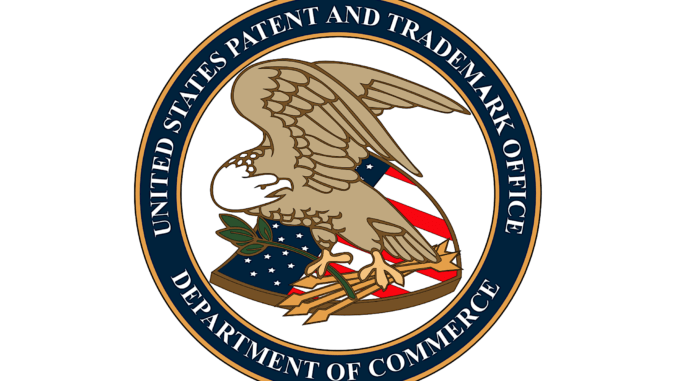
Although it’s not always publicised, plenty of legal tech companies apply for patents. One such example is Brightflag, which has been granted a US patent for the ‘automatic categorisation and assessment of billing narratives [with a] semantic engine [and] machine learning methods’. Artificial Lawyer caught up with an understandably proud CEO, Ian Nolan, to ask him about how he sees this patent helping the company.

It’s useful to have a patent if you are being bought by another company, (as it gives buyers confidence and is a distinct asset in itself), but how does this help the company to win clients and gain more market share?
The hype around AI has made it difficult for customers to sort fact from fiction and identify the few vendors who are truly qualified to advise on and deliver actual AI solutions.
This patent validates that Brightflag is one such vendor and that our application of AI is unique in the marketplace. Every legal department in the world knows how difficult it is to be granted a patent by the USTPO, so in that sense, we think it will help us to stand out as a trusted source of expertise.
(Note: see below for more details about the patent).
Do you know of any companies in the legal tech space that have ever gone to court over an alleged patent infringement?
Patenting unique technology is only logical, and standard practice among software companies. I don’t know of any software companies that want to litigate IP, and we certainly hope that we never have to. We’d rather our competitors push the envelope with their own innovations.
Will a patent like this really stop any other legal tech company from providing a very similar solution, especially given that NLP tech is now quite popular across many businesses?
Again, we don’t want to litigate IP, which is what would be required to stop another company from copying our innovation. That’s not to say we wouldn’t take action if required, but it’s not the reason we sought the patent.
In any event, it would be far more difficult for another legal tech company to replicate the more than 100,000 hours of supervision and training that has been invested in Brightflag’s machine learning model over the years to ensure our AI yields valid and valuable insights for our customers.
We’ve spent the better part of a decade building on the IP covered by this patent to meet the complex demands of corporate legal professionals.
More broadly, how is the business doing and do you see a change in how legal teams approach benchmarking legal fees?
The business is doing really well. We added more customers in the first half of 2021 than we did in all of 2020, and that’s not due to Covid: we also added 47% more customers in 2020 than we did in 2019. And in spite of the pandemic and all the uncertainty it’s created for businesses everywhere, in the last 18 months fewer than 3% of customers have chosen not to continue their relationship with Brightflag.
A notable change we’re seeing among our customers is a shift away from focusing on benchmarking legal fees.
Brightflag arms customers with insights into the ultimate value of legal services, so it’s not just ‘What’s a fair hourly rate for a certain type of matter in a certain business region?’, but also ‘How should the work be split among partners and associates?’, ‘How much time should be committed to each matter phase?’, and at a qualitative level, ‘How does a law firm stack up in terms of its diversity and inclusion record?’ Is it quality of advice? Is it knowledge of the client’s business? These are the types of questions our customers can answer as they seek greater value from their legal spend.
Thanks Ian, and congrats on the patent.
–
So, in terms of the value, Nolan’s main point is that it gives credibility to Brightflag in the eyes of potential customers and that should help the business to grow even more. They’re not looking to go to war with other legal tech companies. Although from what this site has seen over the years there are several others also offering variations on the theme of ‘using NLP and machine learning to understand billing narratives’. But, perhaps marketing that they have this patent will indeed set them apart? Time will tell. Either way, gaining a US patent clearly is something to be proud of and it adds value to the company.
—
P.S. for those who’d like to check the patent out, here is part of it. (And yes, point 1 is in fact a single sentence. It looks like the USPTO needs to have a chat with the legal design folk.)
United States Patent 11,107,137 – Nolan, et al. August 31, 2021
‘Abstract
A system for automatic categorization and assessment of billing narratives has a semantic engine that classifies billing entries with descriptions expressed in natural language into standardized categories of activity and task objective. The classification is by machine learning methods via training data that is maintained, updated and extended as needed. A rules engine applies rules to the categorized invoice data to analyze the data, report violations to a user/consumer of billed services and to perform related calculations.
We claim:
1. A system for the automated analysis of actual invoices and timekeeper narratives included therein, comprising: a computer having a processor; a data store accessible to the computer and capable of storing invoice data in digital textural form; a semantic engine capable of running on the processor, the semantic engine having a learning layer and a processing layer, the learning layer being configured to receive training data containing accurately decomposed and categorized sample invoice data, including narratives, from a training sample of invoice data and develop a training model, the decomposed and categorized sample invoice data including a set of standardized categories of actions, each of which describes an action that may be performed by a timekeeper, and objects of actions, each of which describes an object upon which an action is performed by a timekeeper, the processing layer being configured to process actual invoice data associated with an actual invoice in accordance with the training model, to decompose timekeeper narratives in the actual invoice data describing work performed by a service provider into fragments pertaining to actions performed and objects of actions by the service provider, and to categorize the decomposed fragments into at least one of the set of standardized categories of actions and objects of actions for forming categorized invoice data in accordance with the training model, and a rules engine capable of running on the processor, the rules engine having access to at least one rule applicable to the at least one of the set of standardized categories of actions and objects of actions, the at least one rule including one or more billing guidelines, wherein the rules engine is configured to receive the categorized invoice data from the semantic engine, to apply at least one of the one or more billing guidelines of the at least one rule to the categorized invoice data associated with at least one of the timekeeper narratives, and to generate an output consistent with the at least one rule, the output including results of an analysis including at least one determination of whether work associated with at least one of the timekeeper narratives has been optimally performed.
2. The system of claim 1, further comprising a reporting engine, the reporting engine being configured to generate reports to a user of the categorized invoice data based on an application of the at least one rule, and at least one additional computer connected to the computer via a network, the at least one additional computer being configured to permit the distribution of data storage and to process tasks performed by the system over the computer and the at least one additional computer.
3. The system of claim 1, wherein the learning layer is configured to generate a database of pre-categorized text fragments based upon prior evaluation of the training sample of invoice data and to store the database on the data store accessible to the computer, and wherein the processing layer is configured to access the database.
4. The system of claim 3, wherein the processing layer is further configured to evaluate an accuracy of the categorized invoice data, resulting in additional entries to the database.
5. The system of claim 1, further comprising a database of a plurality of identities corresponding to a plurality of persons associated with at least one of the service provider or a recipient, and including a plurality of roles of the plurality of persons, to store the database of the plurality of persons in the data store, the semantic engine being configured to refer to the database of the plurality of persons and to incorporate the plurality of roles of the plurality of persons while processing the actual invoice data, including narratives.’